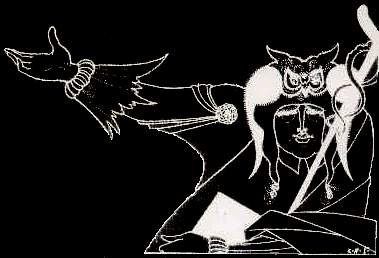General conclusion:
A Postmodernist Study of Ambivalence
After having read The Picture of Dorian Gray for the first time, I was confused because of its ambiguity. Why did Wilde, the champion of aestheticism, write a novel about the moral downfall of an aesthete? Instead of wanting to explain this and other contradictions which seemed to be inherent in Wilde's art and life, I decided to study ambivalence as the key to a better understanding of his novel. In order to deal with Wilde's ambivalence, I opted for a postmodernist viewpoint. Postmodernist literary criticism does not look for one consistent interpretation of a work of art; it believes in the polyinterpretability of a literary work, even if these interpretations are contradictory as is the case for Wilde's only novel.
In the first part of my dissertation, the reception of The Picture of Dorian Gray was briefly examined in order to find out the causes of ambiguity in this novel. I concluded that the ambivalence of Wilde's novel could be traced back to the author's relativist way of thinking, his dandyism and his decadent aestheticism.
In the second section of my thesis, I situated Wilde's relativism and dandyism in its historical context and I discussed it in relation to postmodernist relativism. In the first chapter, I suggested that the breakdown of Victorian values led Wilde to define his own identity and role. His dandyism was not merely a whim or a cheap form of self-advertisement, but a strategy to experiment with different new modes of life avoiding essentialist conclusions. Furthermore, I ascribed his relativist way of thinking and rejection of the Victorian values to his background as a classical scholar and his dubious position as a homosexual and Irish immigrant in a homophobic English society. In the final chapter of the second section, I demonstrated that most of Wilde's notorious paradoxes and epigrams did not just varnish his style, but can be explained by a relativist way of thinking.
In the last part of my dissertation, Wilde's decadent aestheticism was compared with two kinds of postmodernism. I confronted it with postmodernist metafiction, as defined by Linda Hutcheon, and with the American Counterculture of the 1960s, as described by Susan Sontag. In the first chapter, I demonstrated that Wilde's writings and metafiction resemble each other in their rejection of traditional realism. In the second chapter, I used the essays by Susan Sontag on the American Counterculture of the 1960s in order to gain a better insight into the nature of Wilde's art for art's sake. I pointed out how Pater's and Sontag's idealist aestheticism may degenerate into a vulgar hedonism and how Wilde showed the dangers of extreme aestheticism in The Picture of Dorian Gray. Moreover, I argued that Wilde is far more ambiguous with respect to the morality of art than Sontag. Sontag maintains that every aesthetic pleasure nourishes one's sensibility so that one's moral consciousness is increased through the contemplation of art, whereas Wilde indicated in The Picture of Dorian Gray that art is demonic or ambiguous in its moral effects. Sontag's off-hand comment on the propagandistic value of Camp to homosexuals, finally, suggests that Wilde's art for art's sake is less frivolous and more committed than most critics before the 1960s thought. In the third chapter, I discussed the fin-de-siècle aspects of Wilde's decadent aestheticism and today's postmodernism. Fin-de-siècle turned out to be a cultural crisis which is reflected in fears of decadence. Although such fears of cultural degeneracy may correlate with the emergence of a Decadent literature, which celebrates cultural decadence (like at the end of the nineteenth century happened, cf. The Picture of Dorian Gray), postmodernist fiction at the end of the twentieth century proves that this is not necessarily always so.
In conclusion, I situated Wilde's aestheticism and postmodernism in the aestheticist tradition. Wilde asserted that absolute truths (and thus also moral truths) cannot be represented in art because of the autonomy of artistic language. Poststructuralist postmodernism, on the other hand, presumes not only the autonomy of artistic language, but of language in general. As reality can only be known through the framework of language, truth can never be transcendental and is always relative. Wilde demonstrated the absence of metaphysical truths in art when describing Dorian Gray's degeneracy after he attempted to bring the "truths" of art into practice; postmodernist fiction points to the absence of absolute truths in art as well as in life.